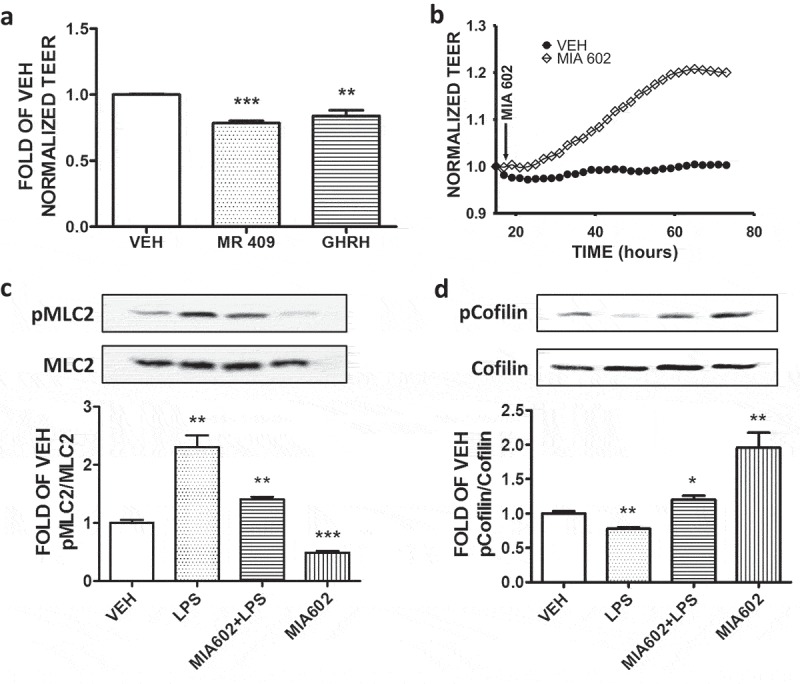Figure 6.

Effects of GHRH antagonist MIA 602, GHRH and GHRH agonist MR 409 in the endothelial permeability of BPAEC.
(a) BPAEC were treated with either vehicle (0.1% DMSO), GHRH (1μΜ) or 1 μΜ of GHRH agonist MR 409 for 36 hours. Both GHRH- and MR 409 – treated groups exerted increased permeability (decreased TEER values) compared to the vehicle – treated group. n = 3 per group, **P < .01, ***P < .001 vs vehicle. Means ± SEM. (b) Confluent monolayers of BPAEC were treated with either vehicle (DMSO) or the GHRH antagonist MIA 602 (1µM). A gradual increase of the TEER values (decreased permeability) was observed in that group that was treated with MIA 602 compared to the vehicle – treated group. n = 3 per group. Means ± S.E. The arrow indicate the addition of MIA 602 and DMSO in the confluent monolayers. Western Blot analysis of (c) phosphorylated MLC2 (pMLC2) and MLC2, (D) phosphorylated Cofilin (pCofilin) and Cofilin. BPAEC were treated for 48 hours with either vehicle (DMSO) or GHRH antagonist MIA 602 (1μM) prior to vehicle (PBS) or LPS (10μg/ml) exposure. The blots shown are representative of 3 independent experiments. The signal intensity of the protein bands was analyzed by densitometry. Protein levels of pMLC2 and pCofilin were normalized to MLC2 and Cofilin respectively. *P < .05, **P < .01, ***P < .001 vs. vehicle. Means ± SEM.
